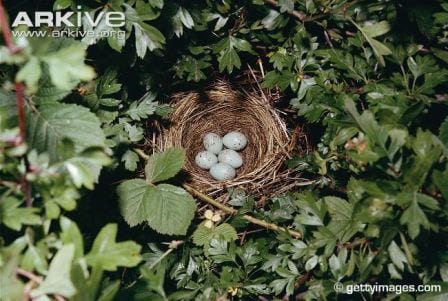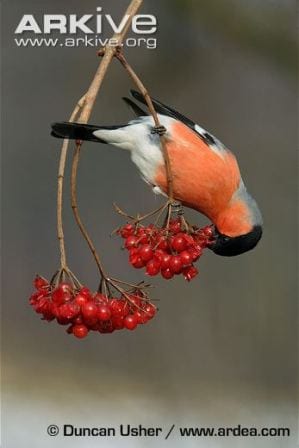Specimen of the Week: Week 124
By Emma-Louise Nicholls, on 24 February 2014
 Nestled between, and rather physically dwarfed by, a cuckoo and a sparrowhawk, this specimen sits is our ‘Taking Flight’ case. That doesn’t mean it’s a bird though, as there are many other types of animals that fly to varying degrees of definitions of the word. Bats, colugos, frogs, squirrels, etc, etc. It’s a beautiful animal and I feel the need to bring it out of the shadows. This week’s Specimen of the Week is…
Nestled between, and rather physically dwarfed by, a cuckoo and a sparrowhawk, this specimen sits is our ‘Taking Flight’ case. That doesn’t mean it’s a bird though, as there are many other types of animals that fly to varying degrees of definitions of the word. Bats, colugos, frogs, squirrels, etc, etc. It’s a beautiful animal and I feel the need to bring it out of the shadows. This week’s Specimen of the Week is…
**The bullfinch** (Ok, it is a bird.)
1) The bullfinch is a small and beautiful bird. The bullfinch has a short, robust bill, which has evolved for breaking seeds. Its natural diet consists primarily of seeds and berries though the variety of species of plant upon which it feeds is hugely diverse. During the winter when its main food types aren’t in season, it will feed on the buds of fruit trees.
2) Sexual dimorphism means that males and females can be told apart, though as in many species, it is only really easy if you have one of each sat next to each other for comparisons. The male has a black head and tail, a grey back and a red belly. The female has similar markings but is not so brightly coloured as the red of the male’s chest is replaced by pink-beige feathers in the female. A young bullfinch is similar in colouring to the adult female, although it does not gain the black cap on the head until it has had its first molt. The astute among you will by now have worked out that our specimen is of a female.
3) The bullfinch normally builds its nest between four and seven feet off the ground. Its prefers real estate in dense hedgerows or wooded areas and builds its nest using a number of materials such as twigs, lichens, and mosses. The nest is then lined with roots to ‘make a house a home’.
4) The female bullfinch lays between four and five pale blue, spotted eggs, which she incubates for up to two weeks.
5) Once the eggs have hatched, both parents will care for and protect the chicks, each bringing food back to the nest for the chicks to feed on. The juvenile bullfinches are able to fly after around two weeks, once their flight feathers are fully developed.
Emma-Louise Nicholls is the Curatorial Assistant at the Grant Museum of Zoology
.
 Close
Close




